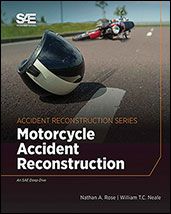Technical Paper
Pycrash: An Open-Source Tool for Accident Reconstruction
2021-04-06
2021-01-0896
Accident reconstructionists routinely rely on computer software to perform analyses. While there are a variety of software packages available to accident reconstructionists, many rely on custom spreadsheet-based applications for their analyses. Purchased packages provide an improved interface and the ability to produce sophisticated animations of vehicle motion but can be cost prohibitive. Pycrash is a free, open-source Python-based software package that, in its current state, can perform basic accident reconstruction calculations, automate data analyses, simulate single vehicle motion and, perform impulse-momentum based analyses of vehicle collisions. In this paper, the current capabilities of Pycrash are illustrated and its accuracy is assessed using matching PC-Crash simulations performed using PC-Crash.


